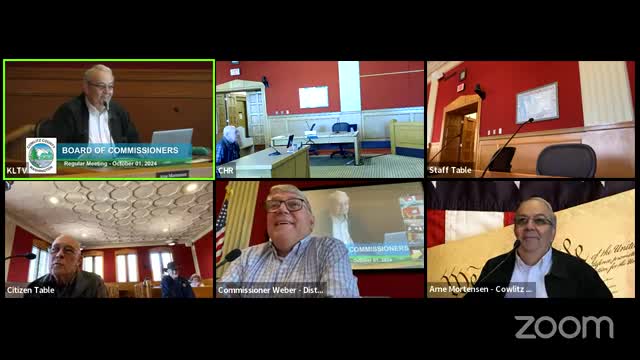Water Crisis Deepens as Arsenic Levels Surge in Wells
October 01, 2024 | Cowlitz County, Washington
This article was created by AI summarizing key points discussed. AI makes mistakes, so for full details and context, please refer to the video of the full meeting. Please report any errors so we can fix them. Report an error »

In a recent government meeting, officials discussed the alarming levels of arsenic found in local water supplies, highlighting a significant public health concern. A report from Longview Veil indicated that some constituents are facing arsenic levels as high as 600 parts per billion, a stark contrast to the current health standard of 10 parts per billion. This discrepancy raises questions about the implications for community health and the effectiveness of existing water treatment solutions.
One official emphasized the need for clearer communication regarding arsenic levels and their health impacts, suggesting that government resources should be utilized to provide accessible scientific information rather than imposing strict mandates on residents. The discussion also touched on the complexities of addressing arsenic contamination, with officials recounting a case where homeowners sought assistance after testing their wells.
In response, county engineers proposed a plan to connect affected homes to a municipal water supply sourced from Castle Rock. However, the project has faced escalating costs, initially estimated at $1.2 million but now projected to reach between $2.5 million and $3 million. Funding from congressional appropriations has helped, but the increasing expenses have raised concerns about the sustainability and feasibility of the solution.
The meeting underscored the challenges of managing water quality issues and the importance of proactive government intervention in safeguarding public health. As discussions continue, officials are urged to find effective strategies to address arsenic contamination while ensuring that community needs are met without overwhelming financial burdens.
One official emphasized the need for clearer communication regarding arsenic levels and their health impacts, suggesting that government resources should be utilized to provide accessible scientific information rather than imposing strict mandates on residents. The discussion also touched on the complexities of addressing arsenic contamination, with officials recounting a case where homeowners sought assistance after testing their wells.
In response, county engineers proposed a plan to connect affected homes to a municipal water supply sourced from Castle Rock. However, the project has faced escalating costs, initially estimated at $1.2 million but now projected to reach between $2.5 million and $3 million. Funding from congressional appropriations has helped, but the increasing expenses have raised concerns about the sustainability and feasibility of the solution.
The meeting underscored the challenges of managing water quality issues and the importance of proactive government intervention in safeguarding public health. As discussions continue, officials are urged to find effective strategies to address arsenic contamination while ensuring that community needs are met without overwhelming financial burdens.
View full meeting
This article is based on a recent meeting—watch the full video and explore the complete transcript for deeper insights into the discussion.
View full meeting
